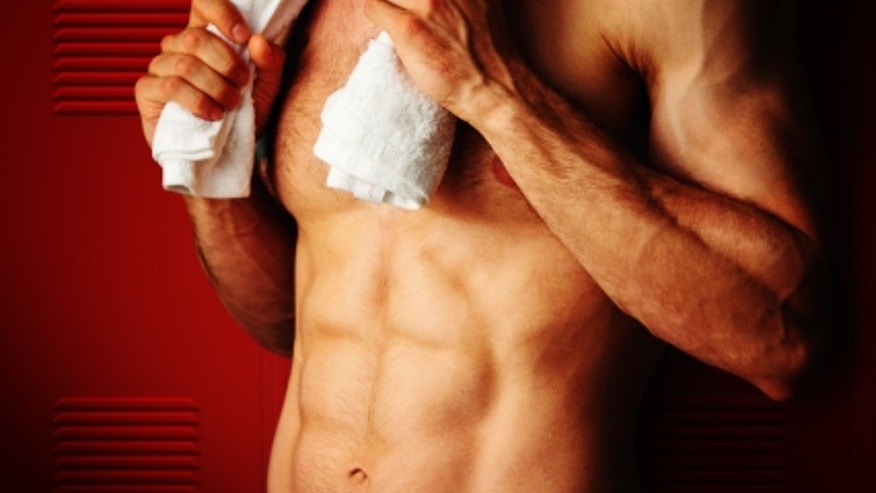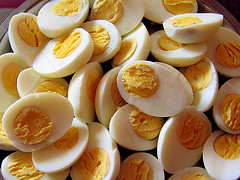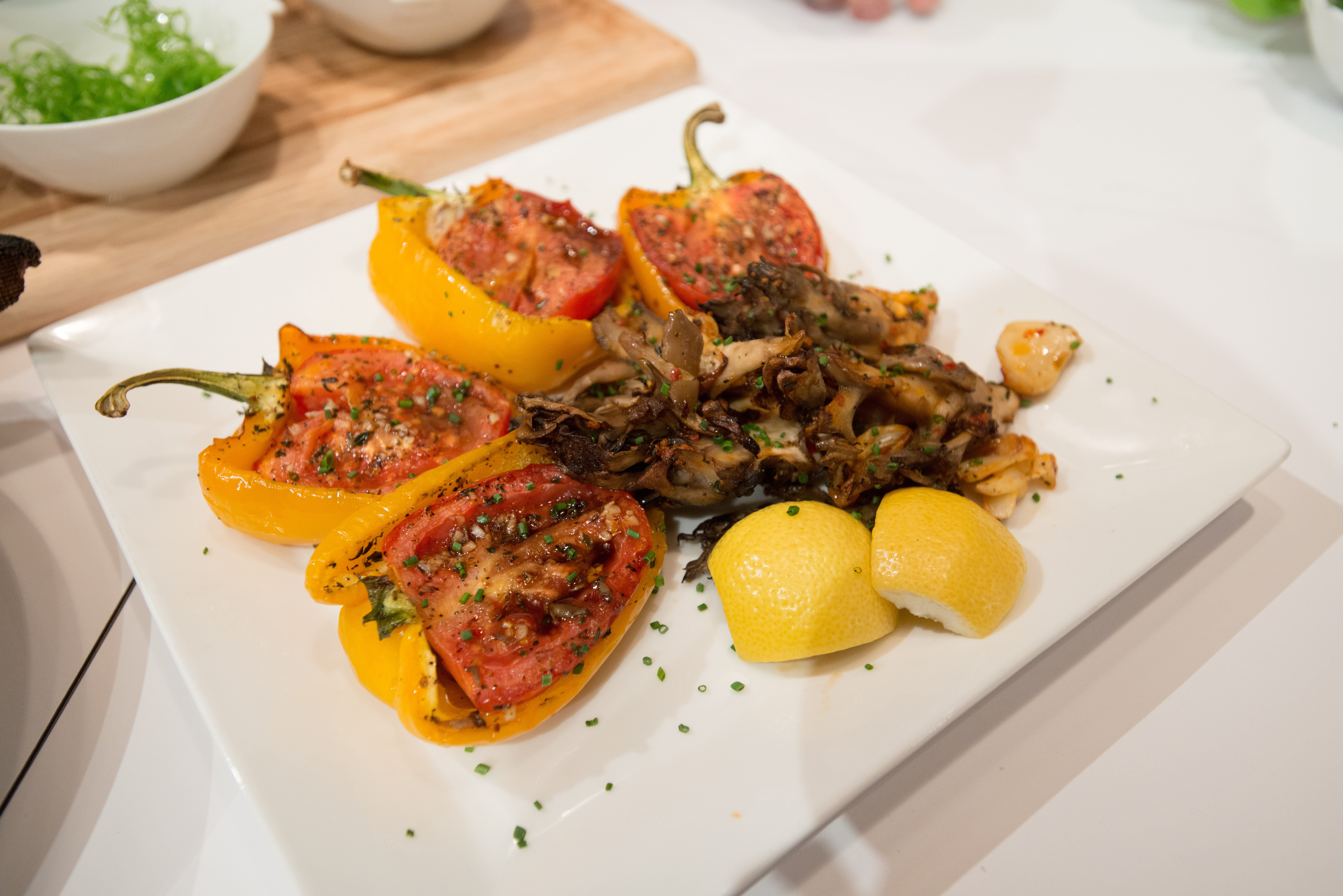How Do You Stack Up Against US Averages In These 6 Key Health Tests?
By K. Aleisha Fetters

iStock
You know your height, weight, and maybe even length (you know what we're talking about), but chances are you don't know the numbers that really matter. See how you measure up against national averages (and actual ideals) in these six health tests:
GRIP STRENGTH
How good are you at getting the lids off of jars? Grip strength—how many pounds of pressure you can squeeze something with—is tightly linked with overall strength and fitness, and is an accurate predictor of how soon you're going to kick the bucket, per research in The American Journal of Medicine. The average right-hand grip strength of men ages 30 to 34 is 116.4 pounds, according to one Physiotherapy review. Search amazon.com for a hand dynamometer to figure out your score.
How good are you at getting the lids off of jars? Grip strength—how many pounds of pressure you can squeeze something with—is tightly linked with overall strength and fitness, and is an accurate predictor of how soon you're going to kick the bucket, per research in The American Journal of Medicine. The average right-hand grip strength of men ages 30 to 34 is 116.4 pounds, according to one Physiotherapy review. Search amazon.com for a hand dynamometer to figure out your score.
How to improve performance: Invest in a hand grip, or even a stress ball, so you can work your hand muscles regularly. It'll help you improve at everything from baseball to rock climbing, which will in turn boost your grip strength even more.
BODY MASS INDEX
This one is easy to calculate, granted you know your height, weight, and the metric system. Just take your weight (or more accurately, your mass) in kilograms and divide it by your height in meters. Values less than 18.5 kg/m2 are considered underweight, between 25 and 30 are overweight, and greater than 30 kg/m2 is obese. It's no surprise the average guy, at 26.6, is in the overweight category, per the Centers for Disease Control and Prevention.
This one is easy to calculate, granted you know your height, weight, and the metric system. Just take your weight (or more accurately, your mass) in kilograms and divide it by your height in meters. Values less than 18.5 kg/m2 are considered underweight, between 25 and 30 are overweight, and greater than 30 kg/m2 is obese. It's no surprise the average guy, at 26.6, is in the overweight category, per the Centers for Disease Control and Prevention.
Caveats: While it's a good overall gauge, it shouldn't be used alone to determine how healthy your weight is, says Ragavendra R. Baliga, M.D., professor of Internal Medicine at The Ohio State University Wexner Medical Center. After all, muscle weighs a heck of a lot more than fat, and theoretically, a body builder's BMI could read as obese.
WAIST CIRCUMFERENCE
What's your waist size? For the average American man, it's 39.7 inches, greater that ever before, according to the CDC. Unfortunately, belly fat is the worst kind, sitting around your internal organs and contributing to metabolic syndrome, a group of factors that up your risk for heart disease and diabetes. In fact, one 2011 study found that larger waist circumferences are linked to cardiovascular, cancer, and all-cause mortality, even if BMIs are in check.
What's your waist size? For the average American man, it's 39.7 inches, greater that ever before, according to the CDC. Unfortunately, belly fat is the worst kind, sitting around your internal organs and contributing to metabolic syndrome, a group of factors that up your risk for heart disease and diabetes. In fact, one 2011 study found that larger waist circumferences are linked to cardiovascular, cancer, and all-cause mortality, even if BMIs are in check.
Slim down: While the goal here isn't to see how low you can go, you need to be well below average here. The American Heart Association as well as the National Heart, Lung and Blood Institute both classify men with waists over 40 inches as suffering from "abdominal obesity."
BLOOD PRESSURE
Grab a cuff or stop by your drugstore's pharmacy for a free read. Your blood pressure—a measure of how hard your blood pushes against your arteries during every beat—should be less than 120/80 mm Hg. But in 67 million (that's one out of every three) US adults, that blood pressure is higher, according to the CDC, upping your risk of heart disease and even stroke. And no, that's not an old person's problem. Up to 15 percent of ischemic strokes occur before the age 45.
Grab a cuff or stop by your drugstore's pharmacy for a free read. Your blood pressure—a measure of how hard your blood pushes against your arteries during every beat—should be less than 120/80 mm Hg. But in 67 million (that's one out of every three) US adults, that blood pressure is higher, according to the CDC, upping your risk of heart disease and even stroke. And no, that's not an old person's problem. Up to 15 percent of ischemic strokes occur before the age 45.
Lower it: Your typical healthy living tactics (exercise, lose weight, consume less sodium, stress less) all go a long way toward managing high blood pressure. But you still need to talk to your doc, Baliga says. You might need blood pressure medication, or even treatment for contributing conditions such as sleep apnea.
CHOLESTEROL
HDL + LDL+ 20 percent of your triglyceride level = your total cholesterol level. And it should be less than 180 mg/dL. However, when it comes to HDL (good) cholesterol, higher levels are better. Basically, when your HDLs are low, your LDLs (bad cholesterol) are high, and your triglycerides (fats in your bloodstream) are too, you put yourself at risk for atherosclerosis, buildup in your arterial walls that contributes to heart attacks and stroke. The average total cholesterol level for adult Americans is about 200 mg/dL, which is borderline high risk, according to The American Heart Association.
HDL + LDL+ 20 percent of your triglyceride level = your total cholesterol level. And it should be less than 180 mg/dL. However, when it comes to HDL (good) cholesterol, higher levels are better. Basically, when your HDLs are low, your LDLs (bad cholesterol) are high, and your triglycerides (fats in your bloodstream) are too, you put yourself at risk for atherosclerosis, buildup in your arterial walls that contributes to heart attacks and stroke. The average total cholesterol level for adult Americans is about 200 mg/dL, which is borderline high risk, according to The American Heart Association.
Get tested: These numbers, you're going to have to go to your doctor to find out. A simple blood draw can reveal your numbers and—better yet—your doctor can explain all of their intricacies. Keep in mind exercising, losing weight (if needed), and shunning the smokes can all help improve your balance of HDLs, LDLs, and triglycerides, Baliga says.
FASTING BLOOD SUGAR
How much sugar is floating around your bloodstream? It should be between 70 and 100 mg/dL, according to the National Institutes of Health. Higher numbers are an indication of diabetes or pre-diabetes—in 2012, 9.3 percent of Americans had diabetes, while another 37 percent had pre-diabetes, according to the American Diabetes Association. But beware: Lower numbers point to hypoglycemia, and follow-up tests may be needed to determine why your levels are so low.
How much sugar is floating around your bloodstream? It should be between 70 and 100 mg/dL, according to the National Institutes of Health. Higher numbers are an indication of diabetes or pre-diabetes—in 2012, 9.3 percent of Americans had diabetes, while another 37 percent had pre-diabetes, according to the American Diabetes Association. But beware: Lower numbers point to hypoglycemia, and follow-up tests may be needed to determine why your levels are so low.
Schedule a double whammy: Ask your doc to perform this test right along with your cholesterol one. Just remember to not eat for eight hours beforehand.













